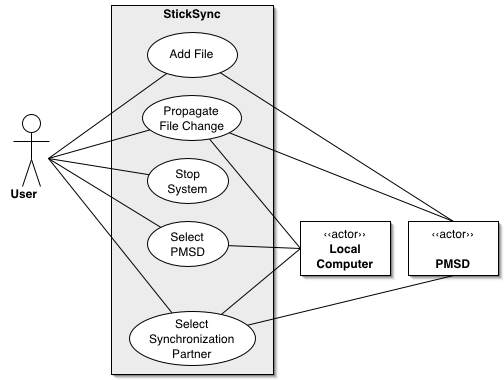Content
- Overview
- The Use Case Model
- Steps
- Writing the Use Cases
- Levels of Formality
- Fully Dressed Form
- Flow
- Essential & Concrete Styles
- Other Need-to-Knows
- Fully Dressed Form
- Which Style to Choose?
- Levels of Formality
- Use Case Driven Development
Overview
A use case is a sequence of actions a system performs, yielding observable result of value to a particular actor.
It writes stories of stakeholders using the system to achieve their goals.
- Systematic & intuitive way of capturing requirements
- Focus on providing value
- Understandable to stakeholders
- Identifies functions of softwares good to users
- Away from product features, towards user goals -> build the right system
The Use Case Model
- Supplementary specification
- Collect non-functional requirements not specific to any use case
- Actors (roles)
- Primary actor
- Has user goals fulfilled by using services of the system
- The goals drive the use cases
- Supporting actor
- Provides a service to the system
- Clarifies external interfaces and protocols
- Primary actor
Steps
- First steps
- Define system boundary
- Identify primary actors
- For each actor:
- Identify user goals
- What they do with the system?
- Describe at the correct level (elementary business processes)
- Identify user goals
- Define use cases that satisfy user goal
- Name each one according to its goal
- Find primary actors
- Same time as identifying their goals
- Ask:
- Who starts/stops the system?
- Who does user & security management?
- Who evaluates system activity?
- Time driven events?
- Find actor's goals
- Actor-goal list
- Generally 1 use case for each goal
- Names of use case reflects actor's intention (verb first)
- Risk & priority columns can be added
- Group similar types of goals
- Actor-goal list
Elementary Business Process
A task performed by 1 person in 1 place at 1 time, in response to a business event, which adds measurable value and leaves data in a consistent state
Not a rule; it's a general guideline on starting to work with use cases.
Around 5-10 steps, not too small/large.
Use Case Context Diagram
Primary actors ---- API ---- Supporting actors
Writing the Use Cases
- How the use case starts & ends
- Normal flow of events
- Sequence of actions & interactions between actor & system
- Alternate flow of events
- Rejoin the basic flow | end
Levels of Formality
- Brief: a paragraph summarizing the main success scenario
- Casual: several paragraphs covering a number of scenarios
- Fully dressed: all steps written in detail
Fully Dressed Form
Flow
A use case are a set of scenarios - flow of interactions.
- Main success scenario
- Trigger to goal delivery & clean-up
- Only one
- No conditional branching
- Extensions (alternative flows & exceptions)
- One at a time
- Each refers to the relevant step of main scenario they extend
- Specify the rejoin point
Essential & Concrete Styles
- Essential
- Focus on user intent
- Avoid technical, design, implementation details
- Concrete
- Embeds UI design decisions
Other Need-to-Knows
- General description
- What use case is about, why it exists, outcome of execution
- Special Requirements
- Usually non-functional
- Often moved to supplementary spec later
- ID & name
- Name: action verb + noun
- Preconditions
- The state that must be in before the use case can be triggered
- Assumed by the use case; checked by system but not checked within the use case
- Not the user's goal
- Postconditions
- The state upon successful completion
- Meets the stakeholders' needs
- E.g. something displayed to the user; something physical presented to the user; some internal state change
- Trigger
- Not repeated if it is the first step in flow
- Primary actor and other stakeholders' interests
- Reveals what should be in the use case & what should not
Which Style to Choose?
- Fully dressed
- Won't work closely with users during development
- Product complex & safety-critical | mission-critical
- Developers not familiar with the domain
- Use Cases + Supplementary Spec serve as Software Requirements Spec
- Use Cases serve as sole basis for testing
- The team is large, fragmented, or geographically separated
Use Case Driven Development
- Analysis & design begin with use cases
- Basis for testing
- Support traceability
- An increment = a working realization of a set of use case scenarios
- Each iteration is driven by the use cases through all the disciplines
- Basis for planning, estimation, and management
- Guide for user manual, useful shortcuts, aids to usability, etc.
